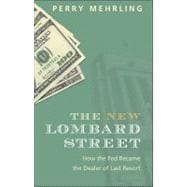
Note: Supplemental materials are not guaranteed with Rental or Used book purchases.
Purchase Benefits
What is included with this book?
| Acknowledgments | p. xi |
| Introduction | p. 1 |
| A Money View Perspective | p. 2 |
| Lessons from the Crisis | p. 6 |
| Lombard Street, Old and New | p. 11 |
| The Inherent Instability of Credit | p. 12 |
| The Old Lombard Street | p. 18 |
| The New Lombard Street | p. 23 |
| Origins of the Present System | p. 30 |
| From National Banking to the Fed | p. 30 |
| From War Finance to Catastrophe | p. 37 |
| Noncommercial Credit in Depression and War | p. 43 |
| The Age of Management | p. 48 |
| Monetary Policy and the Employment Act | p. 52 |
| Listening to the Academics | p. 57 |
| Monetary Walrasianism | p. 60 |
| A Dissenting View | p. 65 |
| The Art of the Swap | p. 71 |
| Currency Swaps and the UIP Norm | p. 72 |
| Brave New World | p. 79 |
| From Modern Finance to Modern Macroeconomics | p. 85 |
| What Do Dealers Do? | p. 92 |
| Inside the Money Market | p. 93 |
| Funding Liquidity and Market Liquidity | p. 98 |
| Anatomy of a Crisis | p. 103 |
| Monetary Policy | p. 107 |
| Learning from the Crisis | p. 113 |
| The Long Shadow of Jimmy Stewart | p. 116 |
| A Stress Test of Moulton-Martin | p. 123 |
| Dealer of Last Resort | p. 132 |
| Conclusion | p. 136 |
| Notes | p. 141 |
| References | p. 149 |
| Index | p. 159 |
| Table of Contents provided by Ingram. All Rights Reserved. |
The New copy of this book will include any supplemental materials advertised. Please check the title of the book to determine if it should include any access cards, study guides, lab manuals, CDs, etc.
The Used, Rental and eBook copies of this book are not guaranteed to include any supplemental materials. Typically, only the book itself is included. This is true even if the title states it includes any access cards, study guides, lab manuals, CDs, etc.